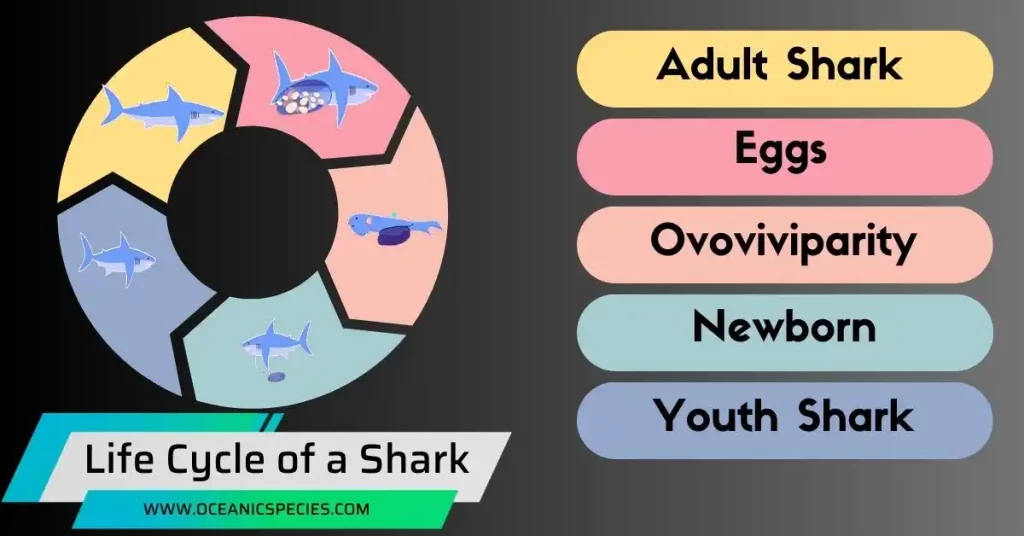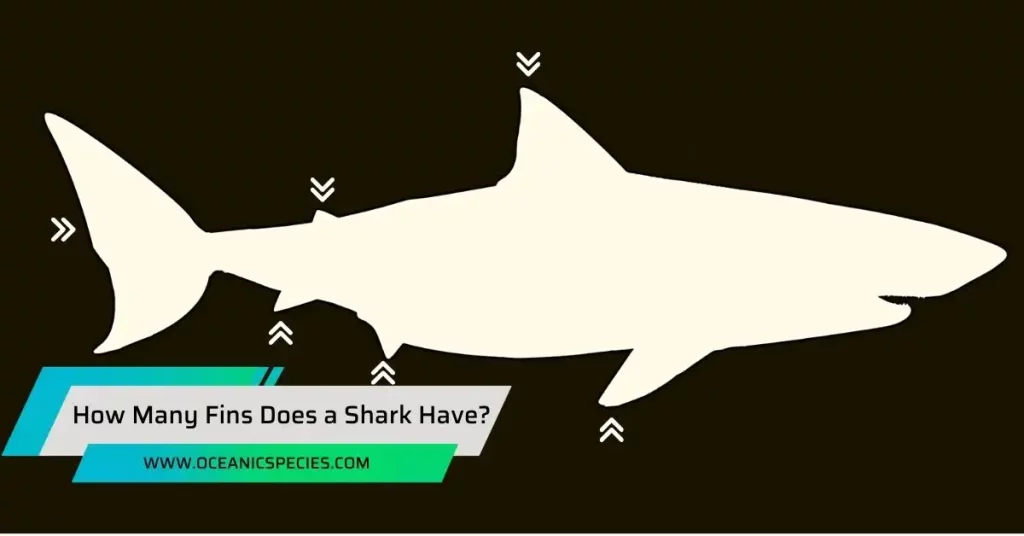The life cycle of a shark involves different stages, including birth, growth, reproduction, and death. Sharks are born from eggs or are live-born, and they grow rapidly during their early years.
Once they reach maturity, they reproduce by either laying eggs or giving birth to live young. Sharks have a relatively long lifespan and can live for several decades, with some species living up to 30 years or more. The life cycle of a shark is crucial for maintaining the population balance in marine ecosystems and is influenced by factors such as prey availability, environmental conditions, and human impacts.
Understanding the life cycle of sharks is essential for their conservation and sustainable management.
Growth, Maturity, And Repetition
The stages of a shark’s life cycle include birth, growth, maturity, and reproduction. Sharks typically begin their lives as eggs laid by females, which then hatch into pups.
In this section, we will delve into the growth, maturity, and reproduction of sharks, shedding light on some of the most intriguing aspects of their life cycle.
Growth
Sharks are born as miniature versions of their parents, known as pups. They undergo a remarkable growth process, with many species growing rapidly in the early stages of life. As juveniles, sharks are highly vulnerable and often seek refuge in shallow waters or reefs to avoid larger predators.
Over time, sharks continue to grow, with some species reaching massive sizes, such as the whale shark, which is the largest fish in the world. The growth rate of sharks is influenced by various factors, including species, habitat, and availability of food.
Maturity
Sharks reach maturity at different ages, depending on the species. The age at which sexual maturity is attained can range from a few years for some smaller species to several decades for larger, long-lived species.
During the mating season, male sharks compete for the attention of females, often engaging in elaborate courtship displays or aggressive behaviors. Once a female shark becomes impregnated, she will undergo a period of gestation, which can vary greatly depending on the species.
It is believed that female sharks have the ability to store sperm, enabling them to delay fertilization until conditions are more favorable for the survival of their offspring.
Reproduction
Sharks employ a variety of reproductive strategies, including oviparity (egg-laying), viviparity (live birth), and ovoviviparity (eggs hatch inside the female’s body). Some shark species lay eggs that are protected by a tough, leathery casing, which eventually hatches to release fully-formed pups.
In viviparous species, the embryos develop inside the female’s body, where they are nourished by a placenta-like structure until they are ready to be born. The size of shark litter can vary greatly, with some species giving birth to only a few pups while others may produce hundreds of offspring at once.
Once born, shark pups are typically self-sufficient and must fend for themselves from an early age.

The life cycle enables sharks to ensure the survival of their species and maintain a healthy ecosystem balance in the ocean. Understanding these stages can provide valuable insights into their behavior, reproduction, and survival.
Let’s explore the different stages in a shark’s life cycle:
Embryonic Stage
Sharks begin their life cycle as eggs, which are fertilized internally within the female shark’s body. The fertilized eggs develop inside the mother’s uterus, receiving nutrients through a yolk sac or from surrounding tissues. This stage can vary in duration depending on the shark species, ranging from a few months to over a year. Once developed, the embryos hatch from their eggs, ready to enter the next stage.
Early Life Stage
As newborn sharks, they are called pups. These young sharks are usually self-sufficient, able to swim and find food shortly after birth. Pups are generally more vulnerable during the early stages of their lives, facing potential threats from predators or environmental conditions. Some shark species, like the great white shark, are born significantly larger compared to others, already possessing predatory skills. The duration of this stage varies among different shark species, but it typically lasts for several years.
Juvenile Stage
During the juvenile stage, young sharks leave their original birthplace and begin to explore their surroundings. Juvenile sharks often inhabit shallower waters or nearshore areas where food resources and protection are accessible. This stage is crucial for the development of their hunting techniques, social interactions, and overall survival skills. As they grow, juvenile sharks continue to feed and gradually transition into the next stage of their life cycle.
Adult Stage
The adult stage is when sharks reach maturity and are capable of reproduction. The length of time it takes for sharks to reach maturity varies widely depending on the species. Once sharks become adults, they actively search for mates to reproduce and continue their species. Adult sharks occupy various habitats, including reefs, open oceans, and deep waters, depending on their species’ preferences. This stage can last from several years to several decades, depending on the shark species and their lifespan.
Conservation And Threats
Sharks have always been intriguing creatures, captivating our interest with their power and mystery. They truly deserve our attention. However, their existence is threatened by various factors that have led to a decline in their populations.
In this section, we will explore the conservation efforts being made to protect sharks and the ongoing threats they face.
Conservation Efforts

- Many organizations and initiatives are dedicated to the conservation of sharks, focusing on raising awareness and implementing measures to safeguard their populations.
- Research plays a vital role in understanding shark behavior, migration patterns, and the impact of human activities on their habitats. This knowledge helps conservationists develop effective strategies to protect these apex predators.
- Conservation efforts include the establishment of marine protected areas (MPAs), where sharks and their ecosystems are safeguarded from fishing and other harmful human activities. These MPAs serve as sanctuaries for sharks and allow their populations to recover.
- Public education and outreach programs are essential in dispelling myths and misconceptions about sharks. By promoting their vital ecological role and dispelling fears, these programs encourage greater appreciation and support for their conservation.
- Collaboration between scientists, governments, and local communities is crucial for the successful implementation of conservation measures. By working together, we can create a sustainable future for sharks and the entire marine ecosystem.
Threats To Shark Populations

- Overfishing is the primary threat to sharks, driven by the demand for their fins, oil, and meat. Unsustainable fishing practices, such as shark finning, where sharks are caught solely for their fins and the rest of the body is discarded, have devastating consequences for shark populations.
- Habitat destruction and degradation pose a significant threat to sharks. Coastal development, pollution, and climate change result in the destruction of their critical breeding and feeding grounds. This loss of habitat reduces their ability to reproduce and find prey.
- Bycatch, the unintentional capture of sharks in fishing gear targeting other species, also contributes to their decline. Sharks often get entangled in nets or trapped on longlines, leading to injuries or death.
- The negative portrayal of sharks in popular media and their portrayal as villains has fueled irrational fears and has hindered efforts toward their conservation. Promoting a better understanding of sharks is crucial in shifting public perception and garnering support for their protection.
- Lastly, the slow reproductive rate of sharks makes them particularly vulnerable to population declines. Most species have long gestation periods and produce few offspring, making it challenging for their populations to recover quickly.
Frequently Asked Questions
How Long Does A Shark Live?
Sharks can live anywhere from 20 to 30 years, depending on the species.
How Big Can A Shark Get?
Sharks can grow to various sizes, with the largest species, like the whale shark reaching lengths of up to 60 feet.
How Do Sharks Reproduce?
Sharks reproduce through internal fertilization, where the male transfers sperm into the female’s body.
Where Do Most Sharks Live?
Sharks live in various marine habitats all over the world, including oceans, seas, and even some freshwater environments.
Conclusion
Sharks follow a unique life cycle, beginning as eggs and developing into powerful predators. As they grow, sharks go through various stages, including the pup, juvenile, and adult phases. Each phase presents its own challenges and opportunities for survival.
Pups rely heavily on their mothers for nourishment and protection, while juveniles learn to navigate the ocean and hunt for themselves. Finally, adult sharks reach their peak physical condition and play a vital role in maintaining the health and balance of marine ecosystems.
As apex predators, sharks are essential in maintaining the balance of marine food chains, contributing to healthy and vibrant oceans.





